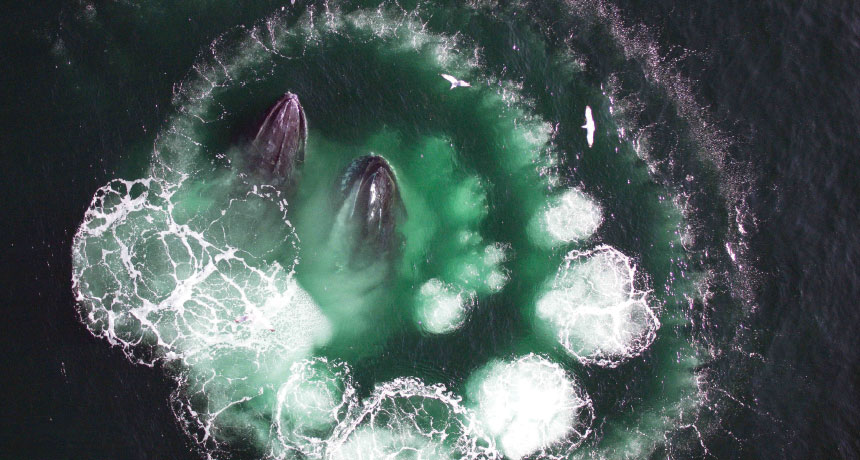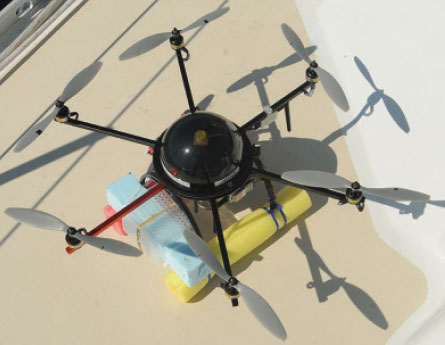‘Whalecopter’ drone swoops in for a shot and a shower
Remotely controlled craft samples spray of humpback whales

CAUGHT IN THE ACT Two humpback whales blow a net of bubbles around their prey in this photo taken by a remotely controlled drone. Researchers can employ drones to sample the spray of photographed whales.
Acquired under National Marine Fisheries Service Permit 17355-01 and NOAA Class G flight authorization 2015-ESA-4-NOAA, John Durban/Southwest Fisheries Science Center/NMFS/NOAA, M. Moore/WHOI







